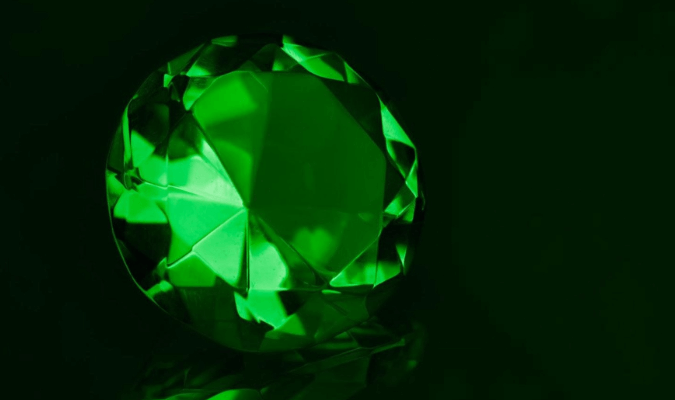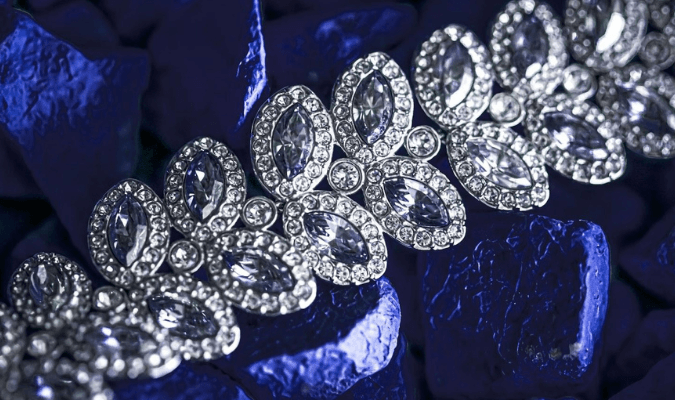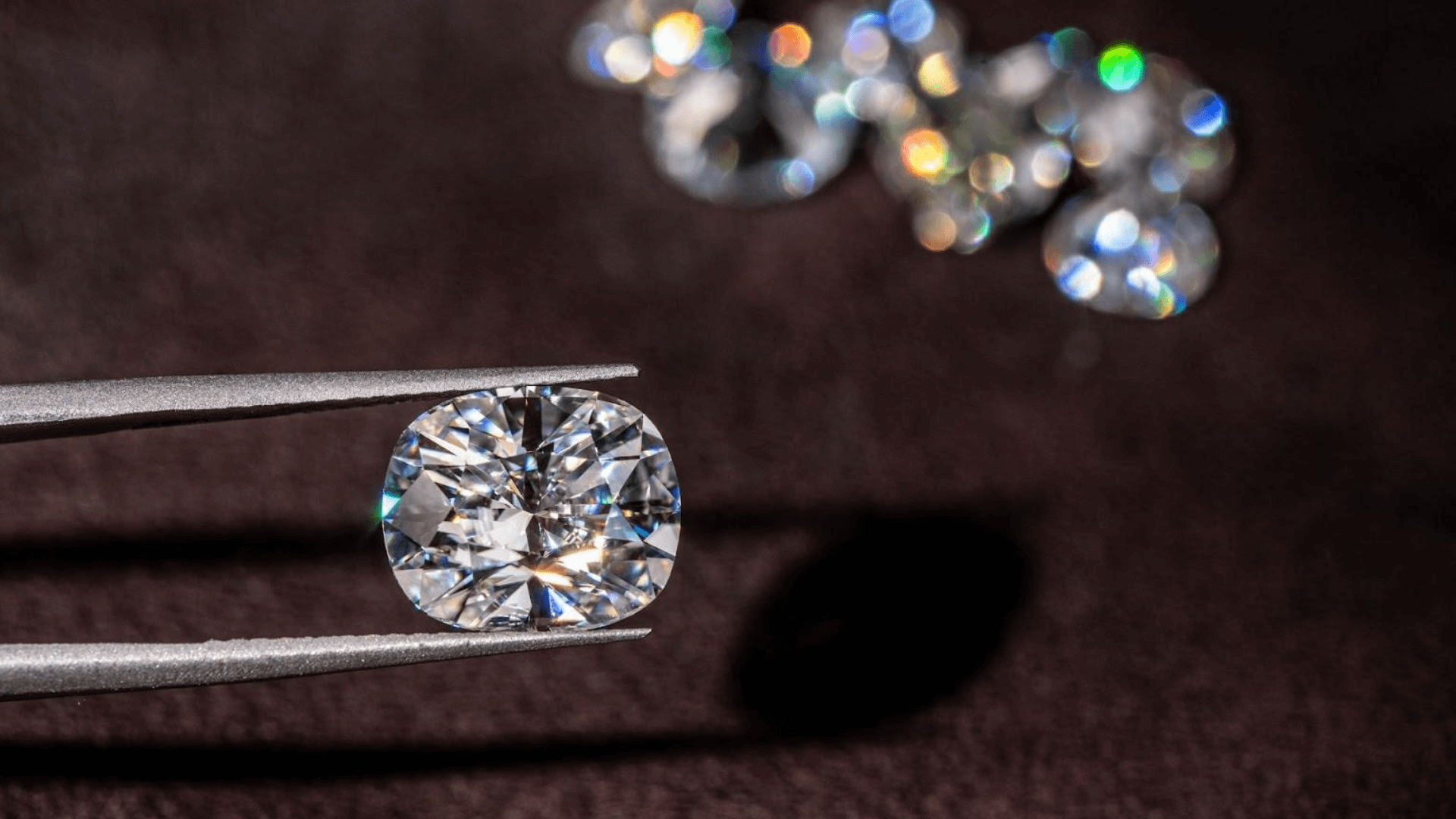Lab-grown diamonds are becoming increasingly popular due to their ethical advantages. They are not mined from the earth but are cultured in a controlled environment in a lab.
Lab-grown diamonds possess the same physical and chemical composition as mined diamonds. Hence, it’s not a question of whether they are real diamonds. Lab-grown diamonds are one hundred percent natural diamonds.
However, because of the process used in making them, many believe these diamonds are more sustainable since they don’t contribute to global pollution or require damaging the environment.
But how true is that?
This piece will discuss details that shed light on lab-grown diamond sustainability, environmental impacts, and more.
If you care about a piece of jewelry’s impact on the environment before purchasing it, this blog post is for you.
With that said, let’s delve in!
What is the difference between lab-grown diamonds and mined diamonds?
Although sustainable lab-grown diamonds have identical chemical and physical properties to natural diamonds, they have some significant differences.
| Lab-grown diamonds | Mined diamonds |
|---|---|
| They are created in a lab | They are typically mined from the earth’s crust |
| They are more affordable | They cost 50 – 75% more |
| Lab diamonds can be manufactured in a lab, and it takes weeks to create a gemstone. | It takes billions of years to form, and it takes a lot of time before they can be processed into beautiful gemstones. |
| Its origin can be traced | Its origin can’t always be guaranteed |
| It is more environmentally friendly. | It typically harms the environment. |
What does sustainability mean?
Sustainability is an act of using resources in a responsible manner such that it replenishes.
By that definition, naturally mined diamond does not fall near into that category
What are sustainable diamonds?

Many people don’t know they may support environmental damage or human rights violations in mining communities worldwide when they buy diamonds.
Sustainable diamonds don’t cause harm to the environment and lives.
A sustainable diamond is an ethically sourced diamond, such as a diamond made in a lab using eco-friendly procedures or a recycled diamond that has been reused, reset, or resized.
Sustainable diamonds are a growingly popular option as the ever-growing issue of climate change drives us to concentrate on being more ecologically friendly in our daily lives.
Are you interested in using one for your engagement ring? See some of our best collections
Are lab-grown diamonds better for the environment?

Yes, lab-grown diamonds are more environmentally friendly than diamonds that are mined.
Two types of energy are utilized in significant numbers when diamonds are extracted from the earth: electricity and hydrocarbons, both of which produce substantial levels of carbon emissions, a type of greenhouse gas.
The mining process uses a lot of water, chemicals, and dangerous materials.
In contrast, lab-grown diamonds are not mined from the earth like traditionally mined diamonds. Instead, they are created in laboratories using carbon converted into diamond crystals under very high pressure and heat.
This process does not require drilling the earth’s surface or dynamite which means it is much more earth-friendly.
Environmental impact of mined diamonds
Furthermore, natural diamonds are often mined using unethical diamond mining techniques, which destroy the ecosystem and may lead to conflict and human rights abuses.
Although natural diamond mining can harm the environment, most mines strive to uphold international standards.
They are constantly enhancing their mining practices and adopting new procedures when necessary to safeguard the environment they operate in and improve it by building educational and healthcare facilities and addressing environmental impacts in areas where diamonds are mined.
How are diamonds mined?

Mining companies must dig deep into the earth to find the diamonds they want to mine. The process takes time; it’s expensive and involves using special equipment like drills and explosives to break up the rock surrounding the diamonds to get them out of their natural environment.
Natural diamonds can be mined using any of the following main diamond mining methods:
- Pipe mining (consists of open-pit mining and underground) mining
- Alluvial mining
- Marine mining
Pipe mining
Pipe mining using the open-pit method involves removing the sand and rock layers just above the Kimberlite. The ore in the pit is blasted and broken into smaller pieces, which are collected, loaded, and moved to a primary ore crusher, where the extraction of diamonds begins.
To mine diamonds using the underground mining method, miners create tunnels underground to get to the kimberlite pipe.
Tunnels are constructed in two levels, stacking one over the other with funnels built to link the two.
The mining process begins on the top level by blasting the ore, which falls through the funnels and is collected on the second tunnel by loaders and brought back to the surface for processing.
Alluvial mining
The Kimberlite pipe that reaches the earth’s surface erodes after millions of years of wind and rain. Rivers and streams carry rough diamonds from the Kimberlite downstream.
These diamonds are typically found in the gravel layer of other elements like mud, clay, and marine life.
The industrial alluvial process requires constructing a huge wall to gather the water in one section, where the gravel is gathered and then carried to the surface and prepared for processing.
Marine mining
Marine mining entails extracting diamonds from deep under the seabed. A strong crawler that suctions gravel from the seabed up through flexible hoses or pipes is used by ships with specialized technology to mine for diamonds far out at sea.
During the early stages of marine mining, a swimmer would gather gravel that contained diamonds from the shallow seabed. But due to technological advancements, they now excavate the diamonds using a sizable drill affixed to the ship.
As a side note, the coast of Namibia is the richest source of marine diamond deposits currently known, accounting for about 64% of Namibia’s entire diamond production.
Once the ore has been extracted, it’s time to process it to get the diamond, and this involves a five-step process:
- Crushing
- Scrubbing
- Cyclonic Separation Plant
- Recovery
- Cleaned, Weighed, and Packaged
Crushing
This involves reducing the ore to a more manageable size no larger than 150mm. A second crusher called a roll-crusher might be needed to achieve this size.
Scrubbing
The ore pieces are cleaned during the scrubbing stage to remove any loose residual material clinging to them before being screened. Ore fragments smaller than 1.5 mm are removed because it is too expensive to extract diamonds from them.
Cyclonic Separation Plant
The diamond-bearing ore is mixed with ferrosilicon powder and water and measured to a specified density. After mixing, the mixture is put into a cyclone, spins at high speed, and is forced to separate.
The materials with the highest density sink to the bottom, and as a result, a layer rich in diamond concentrate is created.
Recovery
The diamond-rich concentrate undergoes several procedures involving crystallographic laser fluorescence, x-ray luminescence, and magnetic susceptibility. These processes are calculated based on the unique characteristics of diamonds.
The additional heavy-density materials gathered in the cyclone separation plant are separated from the raw diamonds through these procedures. Sensors pick up on the flashes of light that diamonds emit.
In response, a microprocessor receives a signal and shoots an airburst in the direction of the diamond. Following that, the diamond is spat into a collection box.
Cleaned, weighed, and packaged
The gathered diamonds are then washed, weighed, and packaged for shipping after being cleaned in an acid solution. According to the Kimberley process, each container is completely sealed; they have a tamper-resistant seal and are marked on-site.
Environmental impact of lab-created diamonds

To determine its environmental impact, you need to know how they were made.
Typically, lab-created diamonds or synthetic diamonds are made in a controlled environment using one of two methods listed below:
- HPHT (high-pressure high temperature) method
- CVD (chemical vapor deposition) method.
To help you understand its impact on the environment, having insight into what goes on during production is essential.
- Enormous microwave-heat generators replicate the earth’s process using high pressure, high temperature (HPHT) production that requires maintaining a temperature above 1300-1600 °C or chemical vapor deposition (CVD) that relies on temperatures as high as 1500°F.
- Constant energy is required throughout the day to produce the gems.
- In a matter of weeks, lab-created diamonds, otherwise known as cultured diamonds, can be created in a lab simulating the process that takes millions of years underground.
Typically, lab-grown diamonds are more earth-friendly than mined diamonds. They are made with less pressure on the environment, requiring less mining and energy to create. Hence, they do not harm the environment to the same extent as earth-mined diamonds.
Nevertheless, some lab-created diamonds are more sustainable than others. The energy source used in creating a diamond determines if the term sustainable should be used on a specific gem.
If the energy source used in making a diamond is fossil fuel, it impacts the environment negatively. Hence, such a diamond maker uses less sustainable processes than a maker using renewable energy.
That said, you can see that even if a diamond was produced in a lab, it does not automatically make it environmentally friendly.
Hence, If you’re planning to buy an environmentally friendly diamond, you may need to do some research about where to purchase it, keeping in mind the following:
- Look for a jeweler who is willing to disclose the stones’ provenance.
- Find out if the diamond supplier is trying to reduce its carbon footprint.
- Learn about the process used to make your diamond to see if it was as energy-efficient as possible.
- Note that a recycled diamond may not have been acquired initially ethically.
If you are committed to sustainability in all aspects of your life, you don’t have to look far. You can find earth-friendly lab-created diamonds in Etika Jewels store.
Is growing diamonds a sustainable alternative to diamond mining?

Diamonds only exist in small quantities on earth and take billions of years to form. At the present rate of mining, this resource will eventually run out.
The only alternative is lab-created diamonds, which are readily available since they can be created in a few weeks.
Long before the resources needed to make synthetic diamonds run out, people will run out of natural diamonds on earth.
Besides that, when talking about a sustainable alternative, it is wider than just use and availability.
Earth-mined diamonds have some dangerous impacts on the environment and climate.
In comparison, cultured diamonds are made in a controlled environment. Hence, they are much more ecosystem friendly and an excellent alternative to diamond mining.
Takeaway: Lab-grown diamonds are more sustainable
Lab-grown diamond production does not require the same kind of destructive mining that mined diamond production requires. They do not give any mining waste or give off emissions that can cause harm to the environment.
Lab-grown diamonds are made in a safe environment and do not require miners to risk their lives to remove them. Hence they are more sustainable, as we have highlighted with facts in this piece.
However, not all lab-grown diamonds can be deemed ethical or sustainable because these brands typically do not reveal the amounts of energy used to generate their diamonds or the source of their energy.
If you decide to buy a lab-grown diamond, it is crucial you do so from a reliable jeweler who only deals in lab-grown diamonds that come from ethical and environmentally friendly sources.
Planning to purchase a piece of diamond jewelry?
Etika Jewels has some of the best lab-grown diamond collections; see them here.

